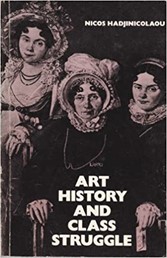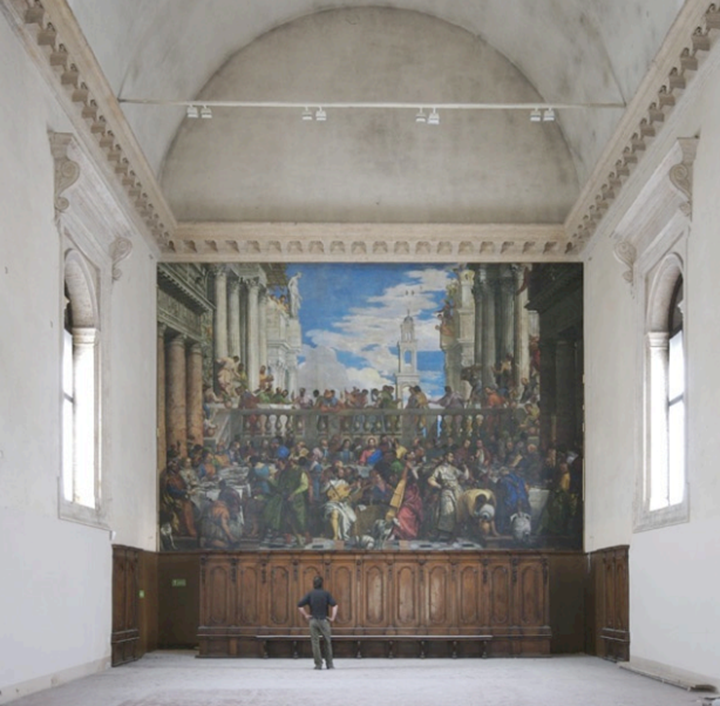“Directed Towards How We See Ourselves”: Social Art History in a Digital World with Paul B. Jaskot and Barbara McCloskey
“There’s nothing that says ‘social art history’ more than a critique of economies, of technologies, of institutional practices that are hidden. Indeed, that’s one of the things that we do, is reveal those hidden problems and hierarchies.”
This fourth season of In the Foreground is a special series of five roundtable conversations dedicated to “the Grand Challenges”—a phrase frequently adopted in the sciences to refer to the great unanswered questions that represent promising frontiers—of bringing together digital and computational methods and the social history of art. This series grows out of a colloquium on this topic convened by Anne Helmreich (Associate Director of the Getty Foundation) and Paul B. Jaskot (Professor of Art History at Duke University) at the Clark’s Research and Academic Program in April 2019. Anne and Paul serve as the guest interviewers for this podcast series, for which they have invited back colloquium participants to reflect further on how digital art history might help us explore social history of art’s future, and which digital methods might be effective at analyzing large scale structural issues and modes of visual expression.
In this episode
Anne Helmreich speaks with Paul B. Jaskot, professor of art history and co-director of the Digital Art History & Visual Culture Research Lab at Duke University, and Barbara McCloskey, professor of art history at the University of Pittsburgh and a specialist of twentieth-century German art, on the role of social art history in a digital world. Paul and Barbara consider the simultaneous emergence of both computational methods and social art history in the 1970s and reflect on what drew them personally to both approaches. They discuss the centrality of collaboration and the role played by institutional and disciplinary expectations for how scholarship is produced. Throughout, the conversation turns to questions of scale and sociality, and the speakers ponder the blind spots, limitations, or dangers of the digital as well as the ways in which both social art history and the digital have––and have not––fulfilled their promises.
TRANSCRIPT

Paul B. Jaskot is professor of art, art history, and visual studies at Duke University in Durham, North Carolina, where he also co-directs the Digital Art History & Visual Culture Research Lab (formerly, the Wired! Lab). His research focuses on the political history of Nazi art and architecture as well as its postwar cultural impact. He is the author of The Architecture of Oppression: The SS, Forced Labor, and the Nazi Monumental Building Economy (Routledge, 2000) and The Nazi Perpetrator: Postwar German Art and the Politics of the Right (University of Minnesota, 2012), among other publications. A founding member of the ongoing Holocaust Geography Collaborative, which explores the use of GIS and other digital methods to analyze the spatial history of the Holocaust, Paul contributed co-authored essays to their volume, Geographies of the Holocaust (Indiana University, 2014), the first book to address the analysis of Holocaust spaces with GIS. Currently, he is continuing his collaborative work in an NEH-funded analysis of the spaces of the Nazi ghettos of Occupied Europe as well as a solo-research project on the history of the construction industry in Germany, 1914–1945. Paul is currently President of the National Committee for the History of Art (2020–2024), the US affiliate to the International Committee of the History of Art (CIHA).
Photo: Jeff Carrion

Barbara McCloskey is director of graduate studies and professor in the department of history of art and architecture at the University of Pittsburgh in Pennsylvania. She has published widely on the relationship between art and politics in 20th century German art, the visual culture of World War II, and artistic mediations of the experience of exile in the modern and contemporary eras. Her most recent book, The Exile of George Grosz: Modernism, America, and the One World Order, was published by the University of California Press in 2015.

Anne Helmreich is associate director of the Getty Foundation and formerly associate director of digital initiatives at the Getty Research Institute, both of the J. Paul Getty Trust. She has also served as dean of the College of Fine Arts at Texas Christian University and associate professor of art history and director of the Baker-Nord Center for the Humanities at Case Western Reserve University. She co-authored the epilogue to Art Crossing Borders: The Birth of an Integrated Art Market in the Age of Nation States (Europe, c. 1780–1914) (Brill, 2019), and co-edited a special issue of Visual Resources dedicated to digital art history (2019). Her most recent monograph is Nature’s Truth: Photography, Painting, and Science in Victorian Britain (Penn State University, 2016).
This conversation was recorded on November 29, 2021.


